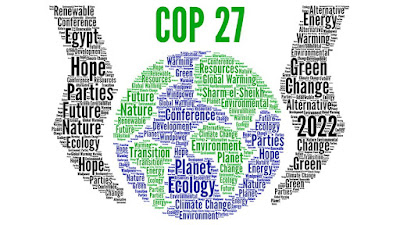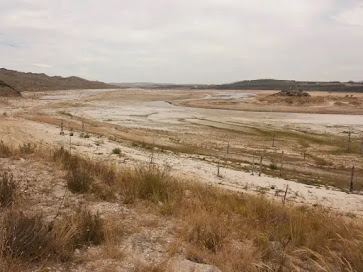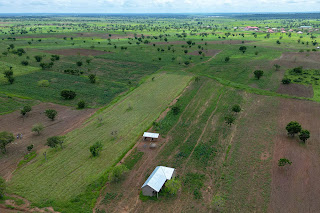Climate Justice matters
 |
| Figure 1: COP27 |
What is climate justice?
It is the "merge of the environmental and civil rights movement" (Bryant and Mohai, 2019) that is meant to safeguard not just the environment but also the people livelihoods depend on the endangered environment. The historical global inequalities resulted from centuries of colonisation and exploitation serve as the foundation for the structural injustice that exists today. At COP6 in 2001, it was recognised that those have least responsible for greenhouse gas emissions (Schlosberg and Collins, 2014) would bear the brunt of the burden of climate change. Climate change contributes to structural injustice that already afflicts society, increasing multifaceted vulnerability of climate effects (e.g., socioeconomic position, gender, age, and ethnicity).
Food insecurity
The rising frequency of climatic extremes not only makes it more difficult to build infrastructure for a climate-resilient water supply, but it also exacerbates already-existing disparities in income, development, and food security. Due to declining food production and revenue, many African regions are more vulnerable to hunger.
As 85% of the continent's poor rely primarily on agriculture for their subsistence ( Mahmood et al., 2019). Pressure on water demand will make the irrigation sector even more vulnerable in Morocco (Verner et al., 2018). Between 1991 and 2011, Cameroon's plantain yield fell by 43% with lower school attendance rates (Fuller et al., 2018), and it happens across Africa. It highlights why it's crucial to prioritise adaptive solutions for reducing the vulnerabilities in African food systems, such as farmer training (Fuller et al., 2018; Mahmood et al., 2019).
Extreme weather conditions have played a major role in the rise of acute food insecurity and malnutrition among millions of people, increasing the level of societal unrest. As IPCC reported, 62 million people in eastern and southern Africa required humanitarian aid. Cyclone Idai and the ensuing flooding ravaged Mozambique, Malawi, and Zimbabwe in March 2019, killing over a thousand people and left 2.6 million people in need of humanitarian aid. Across Africa, especially in East Africa, adverse climate conditions for agricultural and pastoral livelihoods have contributed to the rural-urban migration, increasing vulnerability of migrants through exposure to food insecurity(Abbas, 2017; Amadi and Ogonor, 2015). Unfavorable effects on diet and health are disproportionately worse for children and expectant mothers (Gebremeskel Haile et al., 2019).
 |
| Figure 2: Climate migrants in East Africa |
The productivity of high-value crops, like coffee and cocoa may decline, lowering export profits, which may have significant negative effects, especially for those rely heavily on export earnings. High food prices limit people's access to food seasonally. Also, growing expense of transportation due to rising fuel costs has served as an additional barrier to access to food.
Not all climate driven issues
Social imbalance remains big challenges. Non-climatic stressors exacerbate food insecurity in many regions, including a lack of access and finance to agricultural inputs, with unfavourable climate impacts on agriculture lowering children's educational attainment (Fuller et al., 2018) and gender equality needs improved as women are always playing role in collecting water. Income diversification and climate education are encouraged in Kribi-Campo coastal area (Evariste et al., 2018). Another form of social vulnerability is geographical and social isolation, which is particularly prevalent in pastoralist communities in eastern and southern Africa (Sonwa et al., 2017; Basupi et al., 2019). Rural areas frequently have weak transportation systems, less access to markets or information, fewer options for generating income, and are less able to be warned about hazards.
 |
| Figure 3: Gender Comic Book is assisting families in cooperation in Malawi |
What to do?
Climate adaptation requires cooperating developing areas with sufficient financing in order to address different risks. It also requires supporting their adaptation plans with solutions that are specifically designed for their own capabilities and situations. In addition to increasing access water and food, social vulnerability needs to be minimised for sustainable development in Africa.



Comments
Post a Comment